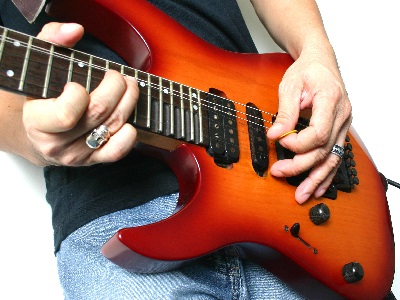How to Get Rid of Unwanted Noise in Guitar Playing
Okay, so you’ve honed your chops, you’ve put in your thousand-plus hours to learn how to shred and play heart stopping, head banging, groove oriented riffs, but you still have problems with all those extra strings.
What do you do with string one through five when you are simply playing on string six? Why does string three insist on making a raucous while you play on string four? Are they jealous, or are they simply defunct?
I hate to be the one to tell you, but they are neither.
String noise isn’t some crazy, out-of-this-world phenomenon that chooses only to plague you. In fact, it plagues every guitarist who has ever lived. So if that is true, then why haven’t you ever heard any other guitarist with a symphony of discordance accompanying their playing?
They learn how to get rid of unwanted noises.
Today, we are going to go over some basic techniques that will not only help you to get rid of all that unwanted jibber jabber, but also make you take a second look at your playing.
How Do We Do That?
First off, let’s think; how can we get rid of unwanted noises? The answer is by silencing them. Extra string noise is created when your fingers brush adjacent string, whether that be your fretting fingers or your picking hand fingers. Believe it or not, it is usually a result of the former over the latter.

When many guitarists learn difficult pieces or learn to guitar solo, they rush in head first, eager to make a splash and force other players to take note. Of course, who wouldn’t want to be the center of recognition after they have spent hours learning their picking technique and fingering sequences?
The only problem is, when guitarists rush head first into guitar soloing, they tend to get in over their heads a bit too quickly, and as a result, usually find themselves with sloppy fingering techniques. The problem is, most guitarists don’t even notice it. Your fingers should never, never ever, ever hit the fret wiring. They should also never meet the middle of a fret, even for casual rest.
Proper guitar fret fingering involves fingering the note closest to, but not on, the fret wire in which direction you are going. Take for instance an ascending melody from fret five, to seven, to nine. To properly finger the notes, your fingers from lowest to highest note would be closer to fret six, eight, and ten then they would be to fret four, six, and eight.
Another way to avoid noise (or create it if you are sloppy and have bad form) is by palm muting the strings. Your palm should rest half of an inch above the strings at all times. When you are playing a melody, your palm should be muting the lower notes that you aren’t playing. This means if you are playing on the G string, your palm should be muting the D, A, and low E strings.
Now that you know how unwanted string noise is created and how to prevent it, the final step is to take a look in the mirror. Observe your playing, and analyze your finger work and palm work. Then see what needs adjusting, and work on it!
Hands Down The Best Program Ever to Be Created
For the most effective step-by-step guitar method, we highly recommend Gibon’s Learn & Master Guitar course. This award winning DVD program is currently on a 3-day sale and you get to save $100 off the usual price today!
Click here to learn more details and purchase the course before this promotion ends…







Leave A Comment